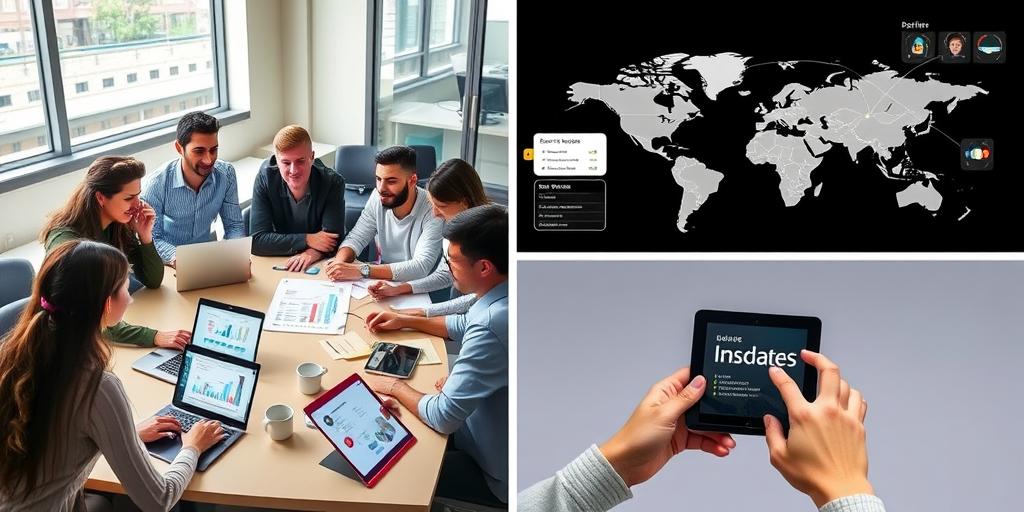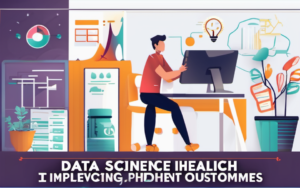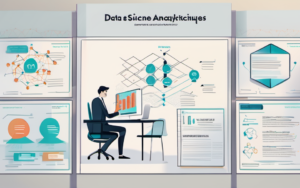Data science is rapidly transforming various sectors, and its impact on the nonprofit world is particularly compelling. Nonprofits, traditionally reliant on intuition and anecdotal evidence, are increasingly recognizing the power of data-driven decision-making to maximize their impact. This shift is fueled by the accessibility of data and the development of user-friendly data science tools, making it easier than ever for organizations to leverage the power of Data Science for social good.
1. Introduction
1.1 The Rise of Data in the Nonprofit Sector
Nonprofits are generating vast amounts of data daily – from donor information and program participation records to volunteer hours and social media engagement. This data, previously underutilized, represents a goldmine of insights. The challenge lies in effectively harnessing this information to make strategic decisions and achieve greater impact. Modern tools and techniques are making this data more accessible and analyzable, even for organizations with limited technical expertise.
The increasing availability of affordable and user-friendly data analytics software is lowering the barrier to entry for nonprofits looking to leverage data. This means smaller organizations can also reap the rewards of data-driven decision-making.
1.2 The Potential of Data Science for Social Good
Data science offers nonprofits a unique opportunity to enhance their effectiveness across all aspects of their operations. By applying sophisticated analytical techniques, nonprofits can identify at-risk populations, optimize resource allocation, and personalize interventions to achieve better outcomes. This translates to a more significant and sustainable impact on the communities they serve. The potential for using data science for effective nonprofit program evaluation is immense.
2. Data-Driven Decision Making in Nonprofits
2.1 Identifying Key Performance Indicators (KPIs)
Effective data-driven decision-making starts with identifying the right KPIs. For a fundraising campaign, this might include conversion rates, average donation size, or donor retention. For a social program, it could involve measuring participant engagement, program completion rates, or changes in participants’ lives. Clearly defined KPIs provide a measurable framework for evaluating success and making data-informed adjustments.
Choosing the right KPIs is critical. Nonprofits should focus on metrics directly linked to their mission and goals, avoiding the trap of collecting data simply for the sake of it.
2.2 Measuring Program Effectiveness
Data science allows nonprofits to rigorously measure the effectiveness of their programs. By analyzing data on program participation, outcomes, and impact, organizations can assess what works, what doesn’t, and where improvements are needed. This evidence-based approach leads to more efficient and impactful program design and delivery. Using data science for effective nonprofit program evaluation is crucial for demonstrating impact and securing future funding.
2.3 Optimizing Resource Allocation
Analyzing data on program costs, outcomes, and beneficiary demographics enables nonprofits to optimize their resource allocation. This might involve shifting resources toward more effective programs, targeting specific demographics, or streamlining administrative processes. Data-driven resource allocation ensures that limited funds are used to maximize social impact. This allows for better strategic planning and the implementation of targeted initiatives.
3. Leveraging Data Science Techniques
3.1 Predictive Modeling for Fundraising
3.1.1 Donor Segmentation and Targeting
Predictive modeling allows nonprofits to segment their donor base based on characteristics such as giving history, demographics, and engagement levels. This enables targeted fundraising campaigns, increasing efficiency and maximizing return on investment. How nonprofits utilize data science for fundraising is becoming increasingly sophisticated.
This targeted approach allows for personalized communication, increasing the likelihood of a successful fundraising campaign.
3.1.2 Predicting Donation Amounts
Predictive models can also forecast the likelihood and amount of future donations from individual donors. This information enables nonprofits to prioritize their outreach efforts, focusing on high-potential donors and tailoring communication strategies accordingly. This is a key application of data science applications in non profit organizations.
3.2 Data Visualization for Storytelling
3.2.1 Communicating Impact to Stakeholders
Data visualization transforms complex data into easily digestible narratives. Compelling charts and graphs communicate the impact of a nonprofit’s work to funders, board members, and the public, making it easier to secure funding and build support.
Clear visualizations make complex data easy to understand.
3.2.2 Engaging Donors with Data-Driven Narratives
Data visualization can also be used to engage donors emotionally, connecting them with the real-world impact of their contributions. By showing how donations have made a tangible difference in the lives of beneficiaries, nonprofits can inspire greater generosity. Engaging donors with data-driven narratives builds trust and increases engagement.
3.3 Machine Learning for Program Optimization
3.3.1 Identifying At-Risk Individuals
Machine learning algorithms can identify individuals at risk of experiencing negative outcomes, allowing for proactive interventions and support. This is particularly valuable in areas such as healthcare, education, and social welfare. Identifying at-risk individuals allows for proactive intervention and support.
This allows for targeted interventions and improved outcomes.
3.3.2 Personalizing Interventions
Machine learning enables the creation of personalized interventions tailored to the specific needs and characteristics of individual beneficiaries. This leads to more effective and efficient program delivery and improved outcomes. Personalizing interventions improves program effectiveness and sustainability.
4. Case Studies: Real-World Examples
4.1 Nonprofit X: Improving Program Outcomes with Predictive Modeling
Nonprofit X used predictive modeling to identify students at risk of dropping out of school. By targeting at-risk students with early interventions, the organization significantly increased graduation rates.
4.2 Nonprofit Y: Enhancing Fundraising Efficiency with Data-Driven Strategies
Nonprofit Y employed data-driven strategies to segment its donor base, resulting in a 20% increase in fundraising revenue. They leveraged data to personalize communications, improving engagement and conversion rates.
4.3 Nonprofit Z: Leveraging Data Visualization for Increased Transparency
Nonprofit Z used data visualization to communicate its impact to stakeholders, increasing transparency and building trust. Compelling visuals highlighted the organization’s accomplishments and strengthened its relationships with funders and the public.
5. Challenges and Considerations
5.1 Data Privacy and Security
Protecting sensitive donor and beneficiary data is paramount. Nonprofits must comply with relevant data privacy regulations and implement robust security measures to safeguard information. The challenges of implementing data science in the nonprofit sector include ensuring data privacy and security.
Data breaches can damage an organization’s reputation and erode public trust.
5.2 Data Accessibility and Quality
Accessing and cleaning data can be challenging for some nonprofits, especially those with limited resources or technical expertise. Ensuring data quality is essential for reliable analysis and decision-making. Best data science tools for nonprofit impact measurement are crucial for overcoming this hurdle.
Data quality directly impacts the reliability of findings.
5.3 Building Internal Capacity
Successfully implementing data science requires building internal capacity. This might involve hiring data scientists, providing training to staff, or partnering with external organizations. This investment is crucial for long-term success. Building internal capacity is a long-term investment that pays off in the long run.
6. The Future of Data Science in the Nonprofit Sector
6.1 Emerging Technologies and Their Applications
Emerging technologies, such as artificial intelligence and blockchain, hold immense potential for transforming the nonprofit sector. These tools can further enhance efficiency, effectiveness, and transparency. The applications are vast and still developing.
6.2 Collaboration and Knowledge Sharing
Collaboration and knowledge sharing among nonprofits are crucial for accelerating the adoption of data science and maximizing its impact. Sharing best practices and resources can help smaller organizations overcome challenges and leverage the power of data.
Sharing resources and best practices is essential for the growth of the sector.
6.3 Fostering a Data-Driven Culture
Ultimately, the successful integration of data science requires fostering a data-driven culture within nonprofits. This involves empowering staff to use data, promoting data literacy, and creating an environment where data-informed decision-making is valued and prioritized.
The transformative power of Data Science in the nonprofit sector is undeniable. By embracing data-driven approaches, nonprofits can significantly enhance their impact, optimize resource allocation, and ultimately, make a greater difference in the world. We encourage all nonprofits to explore the potential of data science and embark on this journey toward a more effective and impactful future.




